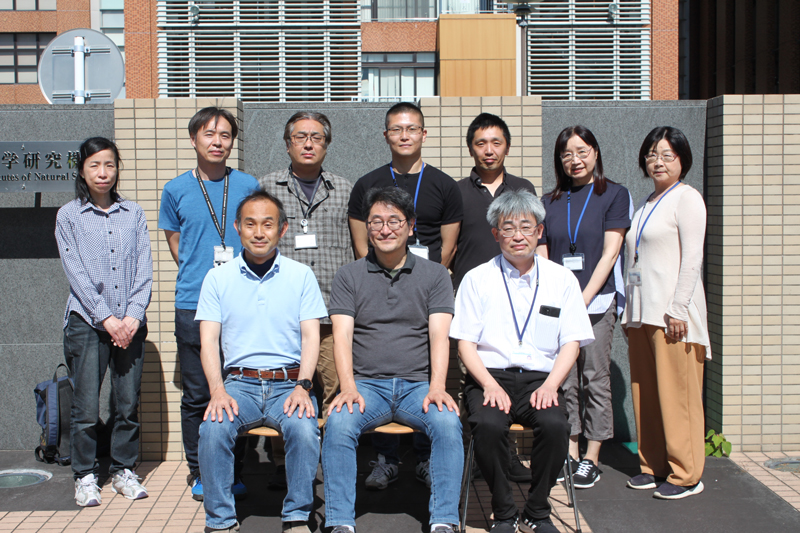To understand the mechanisms of living organisms, studies focusing on each gene in the design of life (the genome) are required. The use of model animals and plants, such as mice, Medaka (
Oryzias latipes), zebrafish,
Arabidopsis,
Lotus japonicus, and
Physcomitrella patens, make it possible to produce genetically controlled organisms, which have markers placed on them, using genetic and cell engineering technologies. Such marking allows us to conduct detailed studies of genes and cell functions. Because these model organisms mature in a short period of time, changes in cells, organs, and individuals can be thoroughly and efficiently observed. On this front, the Facility has the equipment, facilities, and staff to safely, efficiently, and appropriately maintain such organisms.
Model Organisms Facility(Animal)
The worldwide genome project has almost been completed and basic biological research is now in a post-genome era in which researchers focus on investigating the functions of individual genes. To promote the functional analysis of a gene of interest, it is essential to utilize genetically altered model organisms which are generated using genetic engineering technology, and harness techniques such as gene deletion, gene replacement and point mutation.
The NIBB Center for Transgenic Animals and Plants was established in April 1998 to support research using transgenic and gene targeting techniques at NIBB. The NIBB Center for Transgenic Animals and Plants was integrated into the NIBB BioResource center in April 2010, and was renamed “The Model Animal Research Facility”; a place where technical and supporting staff develop and promote research-supporting activities. Furthermore, a state-of-the-art facility for transgenic animals was also opened at the end of 2003 in the Yamate area of NIBB.
The Facility are as follows:
1. The provision of information, materials, techniques, and animal housing spaces to researchers.
2. The use of various kinds of instruments to analyze mutant, transgenic, and gene-targeted animals.
3. The development of novel techniques related to transgenic and gene targeting technology.
4. Cryopreservation and storage of transgenic mice strains.
5. Generating genetically-engineered mice using the CRISPR/Cas9 method.
I. Research support activities (mouse)
In 2001, the NIBB mouse facility (built under specific pathogen free (SPF) conditions) was opened in the Myodaiji area of NIBB. Since then, the production, breeding, analysis, cryopreservation and storage of genetically manipulated mouse strains has been conducted there ever since. The new center facility building in the Yamate area has strengthened research activities that require genetically altered organisms. The building has five floors and a total floor space of 2,500 m
2 in which we can generate, breed, store and analyze transgenic, gene targeting, and mutant mice under SPF conditions. The mouse housing area was constructed based on a barrier system. This building is also equipped with breeding areas for small transgenic fish and birds.
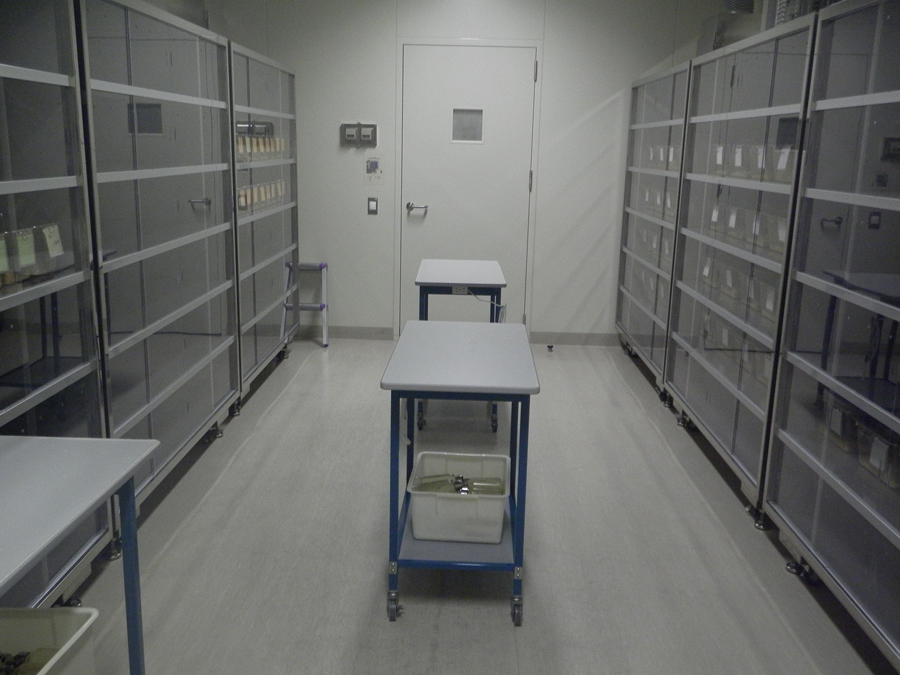
Figure 1. Mouse breeding room in the Yamate area
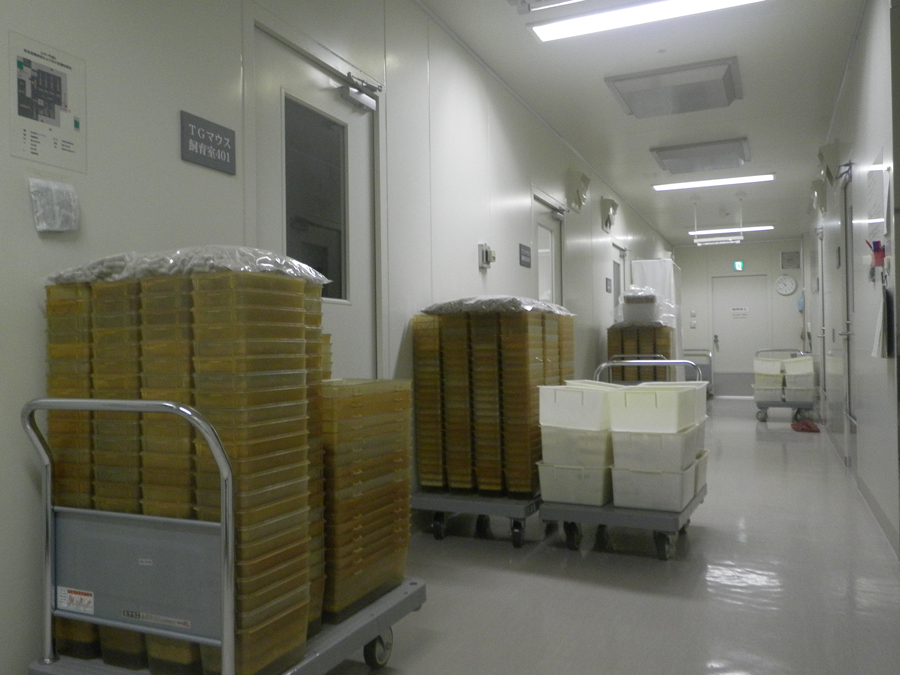
Figure 2. Breeding cages for replacement in the clean corridor
From April 1, 2021 to March 31, 2022, 3,388 mice (1 transgenic line and wild-type) were brought into the facility in the Yamate area, and 30,944 mice (including pups bred in the facility) were taken out.
A number of strains of genetically altered mice from outside the facility were brought into this area after microbiological cleaning using
in vitro fertilization-embryo transfer techniques (1 transgenic line), and stored using cryopreservation (34 transgenic lines). The frozen eggs of 43 mice lines were taken out of the facility.
Genome editing experiments were performed on two kinds of target genes. We generated gRNAs of the target genes, which were transferred into fertilized eggs with Cas9 protein, and were able to introduce intended mutations into the genome DNA.
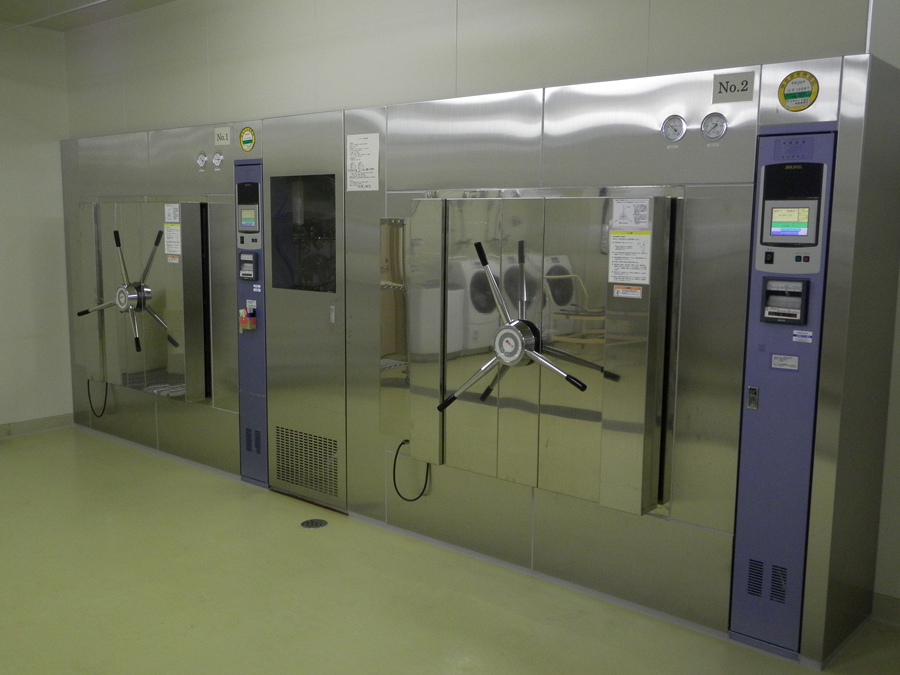
Figure 3. Large sized autoclave in the Yamate area
II. Research support activities (small fish and birds)
The first floor of the center facility building in the Yamate area provides space and facilities to maintain small fish and chick embryos. In the laboratory room for chick embryos, a large incubation chamber is provided and set at 37.5 degrees (suitable for chick embryogenesis). The researchers can manipulate these embryos under optimal conditions, thus removing biohazard risks.
For researchers who employ fish as an experimental model, 480 tanks (1 liter) and 450 tanks (3 liter) are available for medaka and zebrafish, respectively. Additionally, water can be maintained to suit the conditions desired for fish breeding. A medaka line that allows gene induction by heat treatment, in combination with a cre/loxP system, has been developed using this facility. All the rooms are qualified to meet the criteria for transgenic animals, allowing researchers to generate and maintain these important biological tools.
In 2021, 0 zebrafish (0 fertilized eggs) were brought to the facility nor were there any fertilized eggs or chicken embryos brought in or taken from the laboratory. The animals housed within the facility were used for research activities in neurobiology and developmental biology.
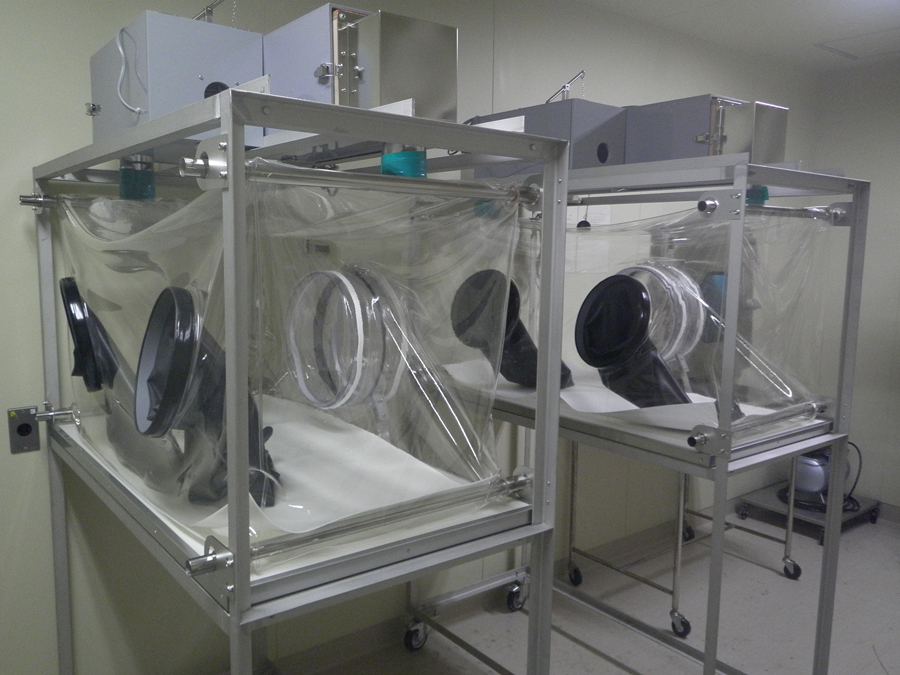
Figure 4. Vinyl isolators in the quarantine room
Model Organisms Facility(Plant)
Plant Culture Laboratory
The Plant Culture Laboratory manages facilities for the general cultivation of plants and the rearing of several animal species that do not qualify for housing in other facilities.
The Plant Culture Laboratory equips and manages approximately 75 culture boxes or growth chambers and 13 rooms with the P1P physical containment level required for established and emerging model plants, such as thale cress (
Arabidopsis thaliana), rice (
Oryza sativa), moss (
Physcomitrella patens), liverwort (
Marchantia polymorpha), green alga (
Chlamydomonas reinhardtii)
, and several other flowering plants including carnivorous plants. The facilities are also used to grow the sea anemone
Exaiptasia pallida. The culture space is used throughout the year by >70 researchers from external and internal groups.
In addition to regular culture conditions, extreme environmental conditions in terms of light and temperature are available for experiments. Three chambers (3.4 m
2 each) with controllable CO
2, humidity, temperature, and light (max 70,000 lux) conditions are also available. A tissue culture rack with dimmable LEDs and pulse-width modulation controllers is available for algae cultures that must be exposed to precise light concentrations. Autotrophic and heterotrophic culture devices are also available for researchers working with cyanobacteria, algae, and cultured flowering plant cells. Aseptic experiments can be performed in an aseptic room with clean benches and a safety cabinet. Various analytical instruments, including three flow cytometry systems and a DUAL-PAM system to measure DNA content and chlorophyll fluorescence, respectively, are also available. A liquid handling system for fully automated and simultaneous
in situ hybridization of sections of up to 60 glass slides is also provided.
There is also a 386 m
2 experimental farm next to the NIBB Myodaiji area building for maintaining Japanese morning glories and related
Ipomoea species, several carnivorous plants, castor beans, and other flowering plants that must be cultivated outdoors. Three heated greenhouses (measuring 44, 44, and 45 m
2) contain sensitive carnivorous plants and the periodically mass-flowering plant
Strobilanthes flexicaulis. Four air-conditioned greenhouses (4, 6, 9, and 9 m
2) are provided for the cultivation of Japanese morning glories and additional carnivorous plants. Two of the air-conditioned greenhouses (9 and 18 m
2) meet the P1P physical containment level and are available for experiments using transgenic rice plants, Japanese morning glories, and carnivorous plants. The Plant Culture Laboratory also maintains a 46 m
2 building with a storage area and workspace. Part of this building is used for rearing Japanese rhinoceros beetles and the common grass yellow butterfly.
Between April 2021 and March 2022, a ploidy analyzer was introduced. It is a compact flow cytometer that is suitable for ploidy and genome size analyses of plants, animals, and microorganisms. The liquid handling system has been updated to support whole-mount
in situ hybridization.
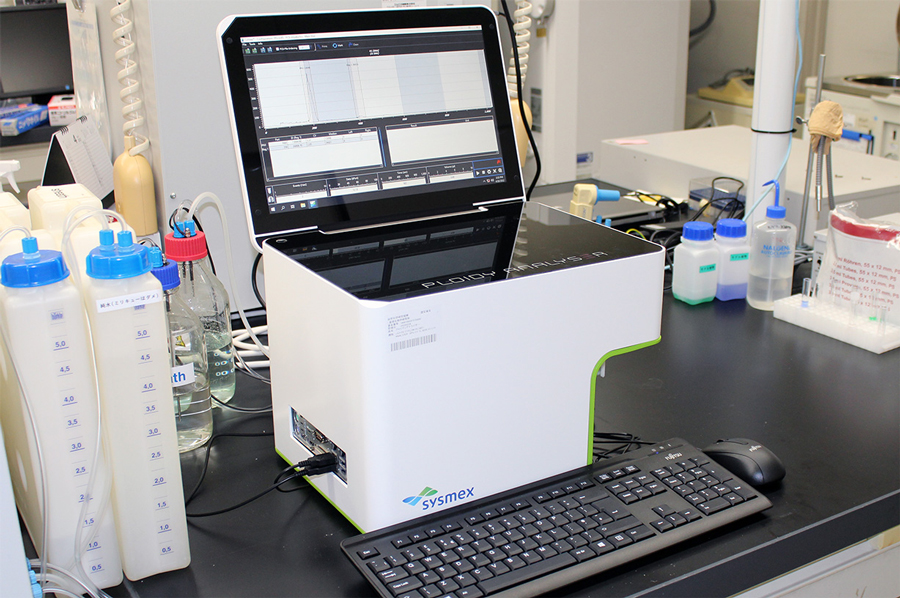
Figure 5. Newly introduced ploidy analyzer.
Cell Biology Research Facility
The Cell Biology Research Facility provides various equipment for tissue and cell culture. This laboratory is equipped with safety rooms which satisfy the P2 physical containment level, and is routinely used for DNA recombination experiments.
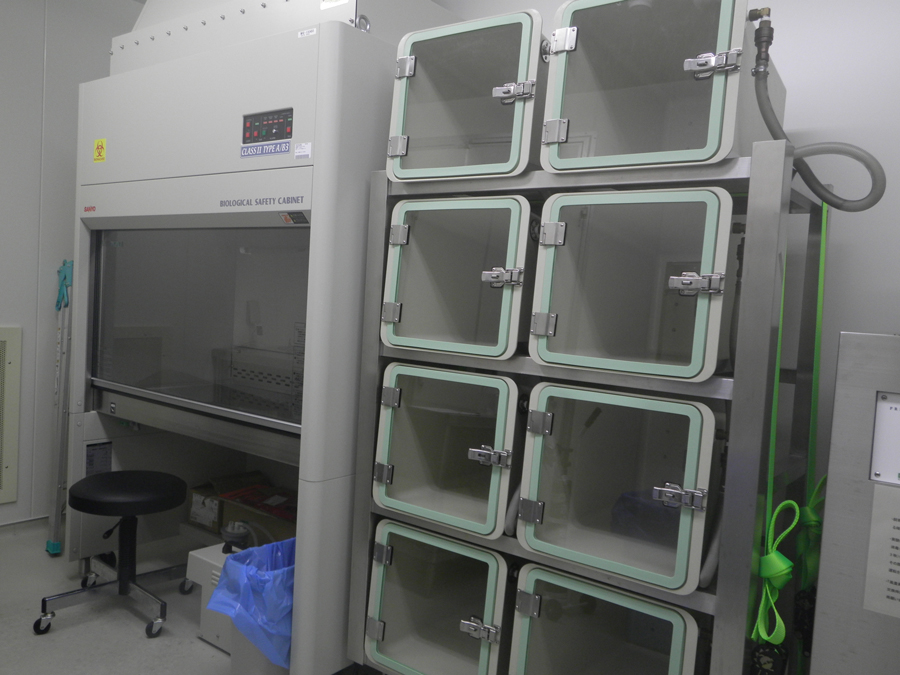
Figure 6. Equipment for P3A experiments











